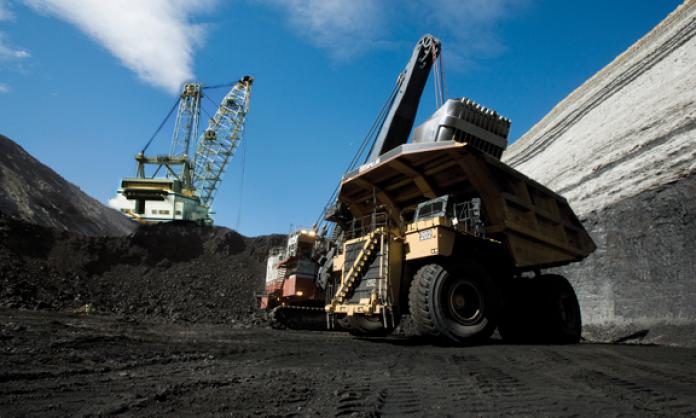“Don’t take my coal job and I won’t take your soy latte” is the slogan on a bumper sticker seen recently in Townsville, Queensland. The sticker was made by supporters of Adani’s proposed mega coal mine at nearby Carmichael, referring to the (apparently all soy latte-drinking) environmentalists, scientists and others who are campaigning to block it.
On 6 June, Adani’s chairman Gautam Adani announced that he had signed off on the “final investment decision” for the mine, which “marks the official start of one of the largest single infrastructure – and job-creating – developments in Australia’s recent history”.
The Queensland government, and much of the media, greeted the announcement as manna from heaven. “Get set for Adani’s jobs bonanza” was the headline in Rockhampton’s Morning Bulletin, while the Townsville Bulletin’s cover said simply, “Cheers Adani”.
It’s no surprise that Adani’s supposed “jobs bonanza” would be enthusiastically welcomed by rural Queenslanders who’ve long suffered from a lack of decent employment. In February, the official unemployment rate in Townsville hit 11.6 percent. More than 9,000 jobs have been lost in the last 18 months.
The real unemployment rate is much higher than the official figure. According to the Australian Bureau of Statistics, around 6,000 Townsville residents have given up on looking for work altogether.
Adani’s backers, including Queensland’s Labor government, the federal Coalition government and the federal Labor opposition, have all based their support on the prospect of significant job creation in the mine and the development of supporting infrastructure. A figure of 10,000 jobs has commonly been cited.
But this figure is a lie. When called upon to verify the numbers under oath during a challenge to the proposed mine in Queensland’s Land Court, Adani’s own expert witness, Dr Jerome Fahrer, said that the real figure will be only 1,464 full time jobs in any given year. Even if we consider Townsville alone, the promised “jobs bonanza” will be only a small fraction of the jobs lost in the region in the past year and a half.
Mining is far from the kind of labour-intensive industry that it was in the past. Already, large parts of mining operations are completely automated. Many of the giant trucks that cart iron ore up and down the sides of open cut mines in the Pilbara are driverless, as are the trains that take the ore to the coast. Adani has promised that it will adopt the very latest of this technology in the construction and operation of its Carmichael mine.
The capital-intensive nature of mining in Australia is reflected in the overall jobs figures. Mining accounts for 7 percent of Australia’s total GDP, but employs only 2 percent of the workforce. Even the “fake news” figure of 10,000 jobs pales in comparison to the estimated 69,000 tourism and other jobs associated with the Great Barrier Reef.
This is where we get to the real “cost-benefit analysis” on Adani’s mine. Not the government and media propaganda that pits the interests of a small number of potential mine workers in rural Queensland against the soy latte-sipping “elites” in the inner cities, but the broader picture of the catastrophe that will unfold in Queensland and elsewhere as we begin to feel the full effects of climate change.
The 1,500 or so jobs created by Adani’s mine have to be weighed against the very real impact it will have on the environment, both locally and around the world.
The government and other Adani spruikers expect that this initial opening of mining in the Galilee Basin will flow into the construction of numerous other “mega-mines”. Ultimately, coal production from the basin could lead to a doubling of Australia’s current coal exports.
Most of this coal is likely to be burnt in power stations in China and India. If all the coal thought to lie in the Galilee Basin were burnt, scientists estimate that it would use up around 10 percent of the world’s total “carbon budget” – the total amount of carbon that could be emitted if we were to limit global warming to below the supposedly “safe” level of 2 degrees Celsius.
This scenario may well be a cause for celebration for coal-loving politicians in Canberra. No doubt, once they’re done serving the fossil fuel barons, they’ll be rewarded very handsomely. For the rest of us, however, it would be a disaster.
On current trends, the Great Barrier Reef is on track to be destroyed by the middle of the century. Already, vast areas have been lost to coral bleaching caused by warmer ocean temperatures and increasing acidity. It’s no exaggeration to say that the success of the campaign against Adani’s mine is a matter of life and death for the reef.
The “jobs bonanza” story just doesn’t stack up. Whatever small number of jobs may be gained if the mine goes ahead will be more than matched by jobs lost, over time, in tourism and other industries dependent on the reef.
What it’s really all about is profit. Adani stands to reap tens of billions over the life of the project, much of which will be whisked away to a subsidiary it owns in the Cayman Islands, a tax haven. The Queensland state government will receive billions in royalties. Meanwhile, the planet will burn.









